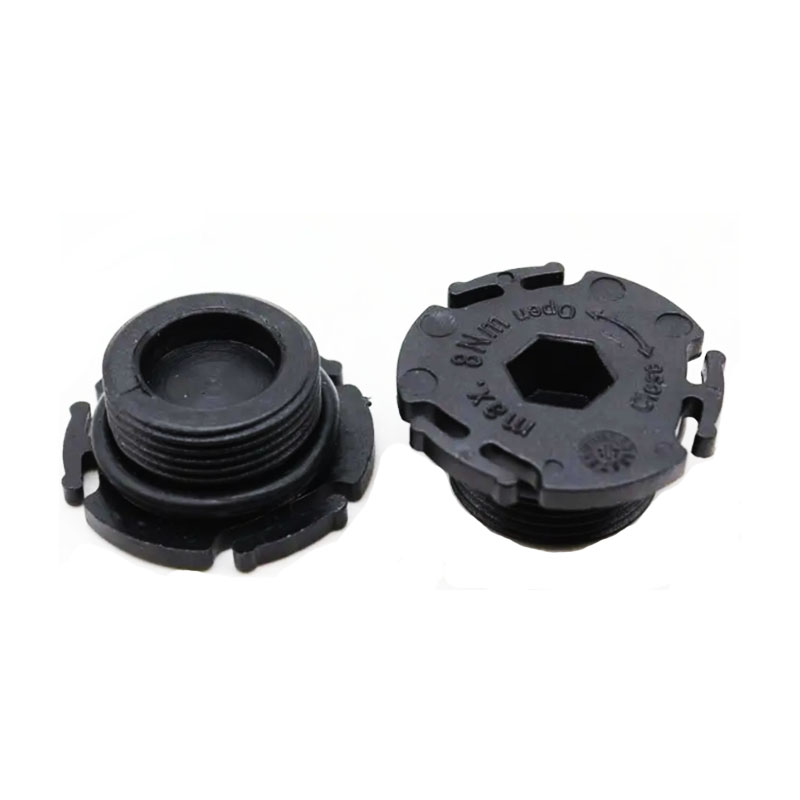engine oil pan drain plug
Understanding the Engine Oil Pan Drain Plug An Essential Component for Vehicle Maintenance
The engine oil pan drain plug plays a vital role in the maintenance and functionality of an internal combustion engine. This small, yet significant component is responsible for allowing the oil to be drained from the engine oil pan, facilitating regular oil changes, which in turn ensures the engine operates smoothly and efficiently. In this article, we will discuss the importance of the drain plug, its function, maintenance tips, and how to properly change your engine oil.
What is the Engine Oil Pan?
Before delving deeper into the drain plug, it is essential to understand the engine oil pan itself. The oil pan is the reservoir that holds the engine oil, which is crucial for lubricating the moving parts within the engine. It also serves as a collection point for oil that drains back from the engine, providing a vital source of lubrication when the engine is running. The oil pan typically has a drain plug located at its lowest point, making it easy to remove oil when it is time for a change.
The Importance of the Drain Plug
The engine oil pan drain plug is usually made of metal and is designed to seal tightly to prevent any leaks. It is typically located at the bottom of the oil pan, making it easily accessible when maintenance is required. The primary purpose of the drain plug is to allow for the controlled removal of oil from the pan. This is a critical process in ensuring that the engine always operates with clean oil.
Regularly changing engine oil is essential for several reasons. Over time, engine oil can become contaminated with dirt, debris, and combustion by-products, which can lead to increased engine wear and reduced performance. By draining the old, contaminated oil and replacing it with fresh oil, vehicle owners can help extend the life of their engines, improve fuel efficiency, and maintain optimal engine performance.
Maintenance Tips for the Drain Plug
1. Inspect Regularly During routine oil changes, take the time to inspect the drain plug. Look for signs of damage, such as cracks or warping, as well as any signs of oil leaks around the plug. If the plug is damaged, it may need replacement.
2. Use the Correct Tools To avoid damaging the drain plug, employ the right tools. A socket wrench is typically best for removing the plug. Make sure to avoid using a tool that might strip the threads on the plug or the oil pan.
3. Proper Torque When replacing the drain plug after an oil change, it is important to ensure it is tightened to the manufacturer’s specified torque setting. Over-tightening can strip the threads or damage the oil pan, while under-tightening can result in leaks.
engine oil pan drain plug

4. Replace the Washer Many oil drain plugs utilize a copper or rubber washer that helps create a seal. This washer can wear out over time, so it is recommended to replace it whenever the drain plug is removed.
How to Change Engine Oil Using the Drain Plug
Changing the engine oil is a straightforward process that can be accomplished with a few tools
1. Gather Supplies You will need new oil, an oil filter, a wrench set, a funnel, an oil catch pan, and a filter wrench.
2. Lift the Vehicle Safely lift the vehicle using jack stands to access the drain plug.
3. Drain the Oil Place the oil catch pan underneath the drain plug and carefully remove the plug with your wrench. Allow the old oil to completely drain out.
4. Replace the Oil Filter Use the filter wrench to remove the old oil filter. Apply a small amount of new oil to the rubber gasket of the new filter, then install it securely.
5. Replace the Drain Plug Once all the oil has drained, replace the drain plug and tightened it to the correct torque specifications. Don’t forget to replace the washer if needed.
6. Fill with New Oil Use a funnel to pour the new oil into the engine, using the dipstick to monitor the level.
7. Start the Engine After checking for leaks, run the engine for a few minutes to circulate the new oil and check the oil level again, adding more if necessary.
In conclusion, while it may seem like a minor component, the engine oil pan drain plug is crucial for maintaining optimal engine performance. Regular inspections and proper maintenance of the drain plug can help ensure that your engine remains healthy, efficient, and reliable for years to come.
-
Understanding the Front Main Engine Seal: Purpose, Maintenance, and Installation
News Jul.29,2025
-
Understanding O-Rings and Seal Rings: Types, Applications, and Custom Solutions
News Jul.29,2025
-
Understanding Crankshaft Oil Seals: Rear Seals, Pulley Seals, and Their Role in Engine Integrity
News Jul.29,2025
-
The Importance of Front and Rear Crankshaft Seals in Engine Performance and Oil Management
News Jul.29,2025
-
Crank Oil Seals: Functions, Types, and Cost Considerations in Engine Maintenance
News Jul.29,2025
-
A Comprehensive Guide to O-Rings and Seals: Types, Materials, and Global Applications
News Jul.29,2025
-
Mastering Diesel and Performance Engine Maintenance: A Guide to Critical Oil Gaskets
News Jul.28,2025
Products categories















